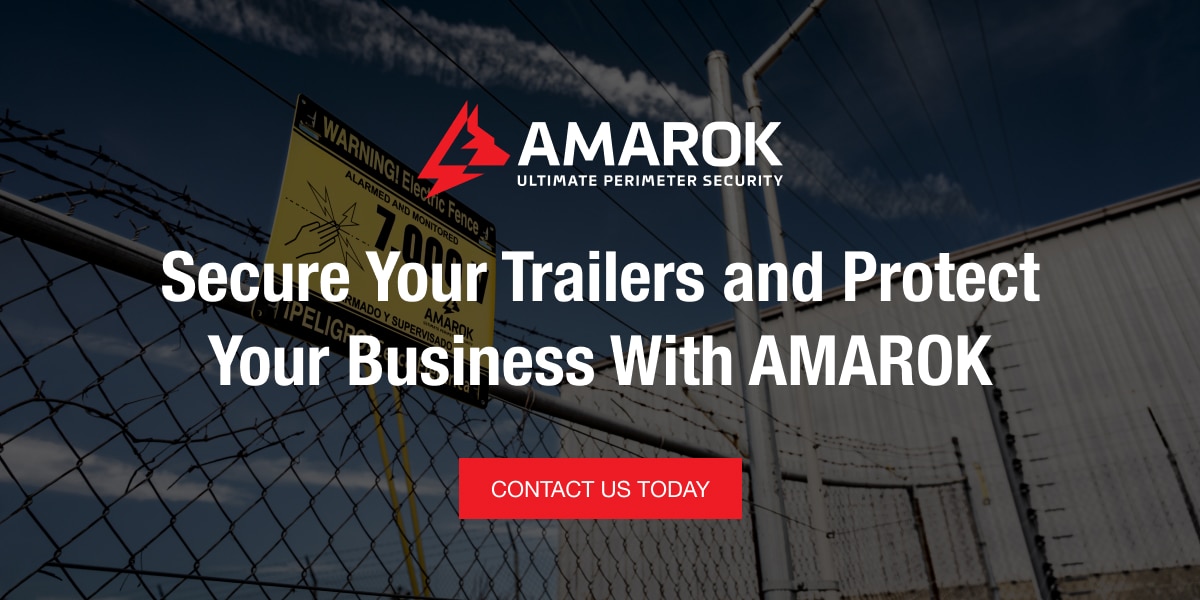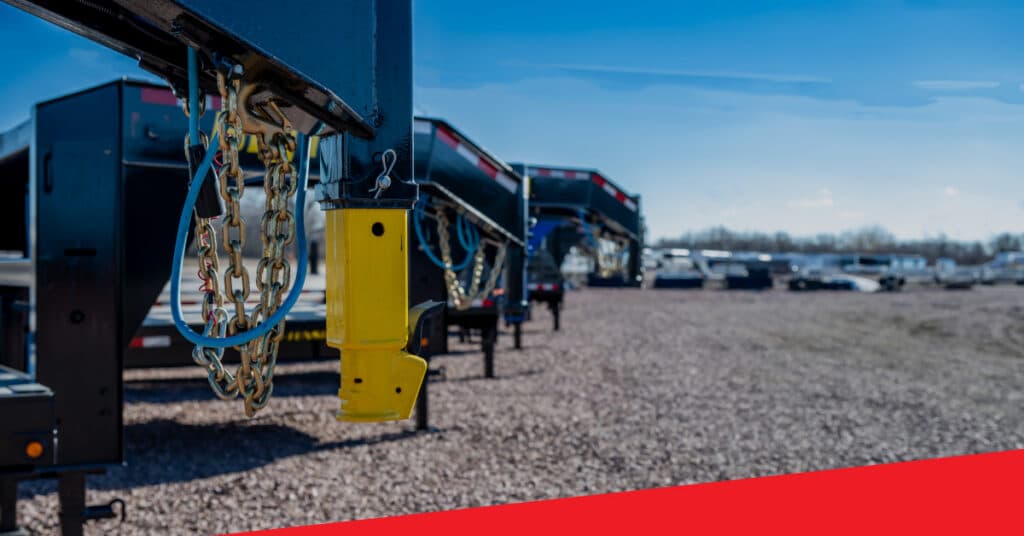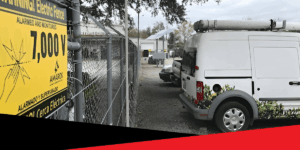Trailer theft is a fast, high-reward crime, costing businesses thousands while eroding customer trust. Thieves often target unmonitored yards after hours, cutting through fences or hitching up to unsecured trailers in minutes. When trailers vanish, you lose critical materials, have to replace tools, and miss deadlines. In regulated industries, stolen trailers can also trigger compliance violations if sensitive equipment or documentation is involved.
Knowing how to prevent trailer theft protects more than assets — it safeguards your brand and meets industry standards to keep your business moving without costly delays. However, successful security measures take more than one layer of protection. The most effective strategy combines physical deterrents, technological tools, and strict operational protocols.
Why Trailers Are Targeted for Theft
According to CargoNet, the first quarter of 2024 saw a 46% increase in U.S. cargo theft. Trailers are high-value, easy to steal, and often left unsecured after hours, allowing criminals to work under the cover of darkness. Thieves can quickly hitch up and tow a trailer off-site, where they transfer the goods to another vehicle or store the trailer in a warehouse, giving them time to unload valuable cargo such as tools, equipment, or inventory for resale. In most cases, trailers are hard to trace because many lack GPS tracking or unique markings.
The rise of strategic cargo theft is also fueling trailer theft. Fraudulent pickups and document scams represented almost 18% of U.S. cargo theft in 2024, a sharp increase from previous years. In addition to selling cargo, stolen trailers are stripped for parts, used to transport stolen goods, or sold under false documentation.
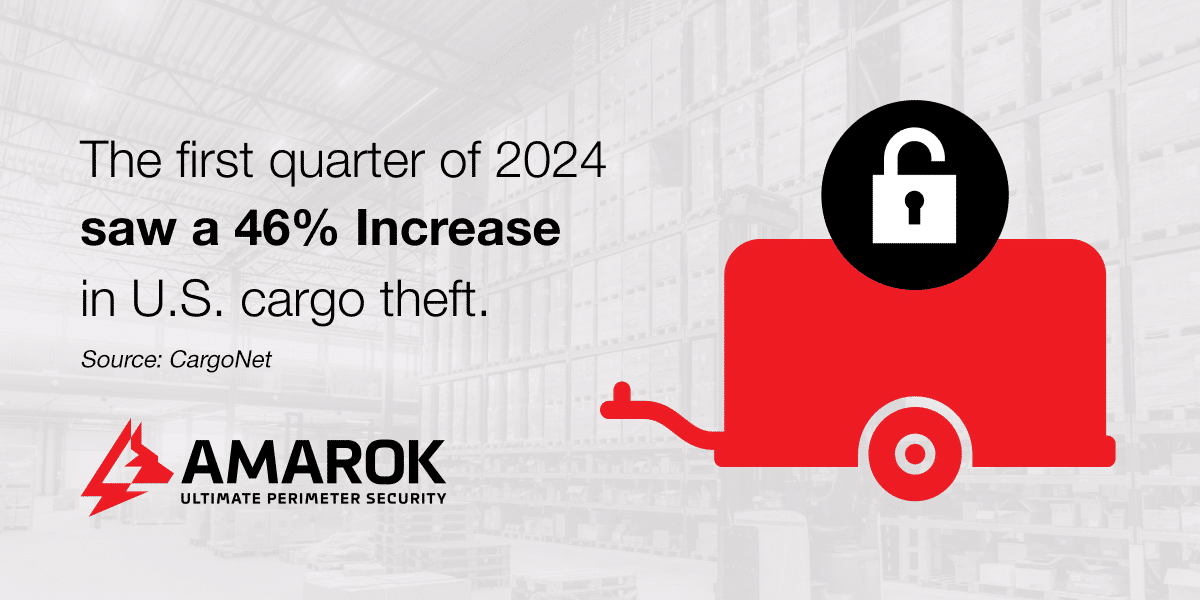
How to Form a Trailer Theft Prevention Strategy
Trailer theft is a growing concern for commercial operations. Thieves target parked, unsecured trailers, often after hours, at locations without adequate perimeter security. Prevention starts with a proactive, multi-layered approach tailored to your site.
Find Your Site’s Vulnerabilities
Common theft locations include unsecured parking lots and warehouses or distribution centers. Thieves exploit predictable gaps in perimeter security, so it’s best to partner with a professional security-as-a-service provider to ensure all perimeter zones are covered. They will document patterns of past incidents, noting frequency of criminal activity, breach locations, or signs of surveillance by thieves. This information will assist your security provider as they conduct a full threat assessment that considers:
- Lack of layered defenses: Sites without a multi-layered security strategy are easy targets for thieves. Layered defences are proactive measures that work together to deter criminals and protect people and assets.
- Weak access points: Perimeter security professionals look for gaps in fencing or unmonitored gates, which invite forced entry.
- Limited lighting: Poorly lit perimeter zones let thieves stay undetected as they wait for an opportunity to act, making it difficult for security personnel to verify potential threats.
- Trailer positioning: Parking trailers near exits or public roads allows thieves to access them more quickly.
- Site location: Sites in industrial zones or remote locations with poor visibility from the street face higher risks.
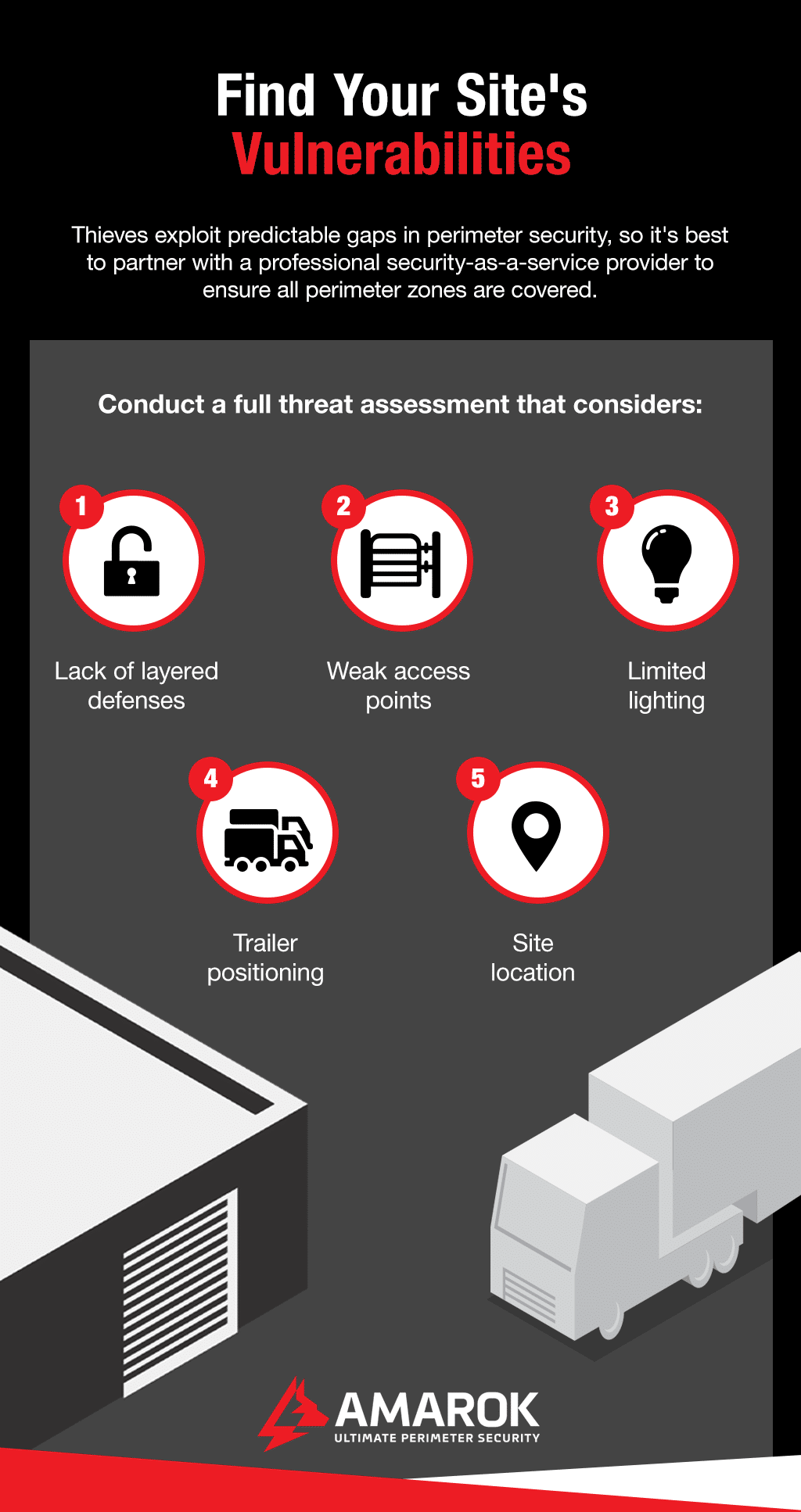
Make Trailer Design Modifications
To protect trailers beyond your perimeter, make modifications that make them stand out. Opt for custom paint jobs or wraps that make trailers visually distinctive. Thieves prefer generic-looking trailers that can easily be repainted, so use bold, unique branding or color schemes that are hard to disguise. You can also incorporate components like high-contrast logos, reflective decals, or patterns that make trailers harder to resell or strip for parts.
Enhance security and ease of identification with custom components or proprietary parts like wheels, lug nut patterns, one-off door handles or latches, and specialized locking housings. These nonstandard components make it more difficult for off-site thieves to tamper with, reconfigure, or repurpose the trailer.
Lastly, add tamper seals or bolt covers that leave clear marks if they are altered or removed. The more obvious your protective measures are, the less appealing your assets will be to potential targets.
Follow Operational Best Practices for Theft Prevention
Implement secure parking protocols to protect trailers on your premises. These include parking trailers in a locked yard and blocking trailer tongues with bollards. Train staff to park trailers in a tight pattern or back against barriers, making them difficult to access quickly and discreetly. Workers should also remove the keys and lock trailer hitches after each use. Ensure employees understand key safety practices for access control compliance, incident reporting, and routine checks, which become part of your team’s active defense strategy.
Increasing traceability is part of a proactive theft prevention strategy. Add GPS tracking to vehicles and trailers for real-time monitoring and engrave serial numbers or asset tags in multiple hidden locations on each trailer. Ensure you keep updated records of trailer VINs and models, as well as identifying features, to help law enforcement recover your property if a trailer is stolen during a delivery.
Using Multi-Layered Security to Protect Your Assets
Trailer theft is fast, often organized, and increasingly common at commercial sites. A multi-layered security strategy stops trailer theft before thieves even attempt to breach your perimeter. When this strategy combines physical barriers, video monitoring, and controlled access, it stops theft in its tracks:
- Electric fencing: Electric fencing is the base layer of a multi-layered security strategy. It creates an imposing physical and psychological barrier, deterring criminals before they can access your property. The Electric Guard Dog™ Fence from AMAROK delivers a safe but memorable shock when thieves attempt to breach your perimeter, and integrates seamlessly with other security solutions.
- Video surveillance: Video surveillance provides clear coverage of your perimeter, helping to verify threats and support faster police response. Strategic camera placement also gives you a view of loading docks, parking lots, and high-value storage zones.
- Gate Access Control: AMAROK’s Gate Access Control system restricts entry to your premises, allowing only authorized personnel and visitors to enter. This solution uses license plate recognition, credential readers, specialized gate locks, and video intercoms.
- Perimeter lighting: Perimeter alarm-based lighting eliminates dark zones and integrates with The Electric Guard Dog Fence, activating the lights when the fence alarm triggers.
Secure Your Trailers and Protect Your Business With AMAROK
Preventing trailer theft demands a proactive, multi-layered security strategy tailored to your site. By securing the perimeter, monitoring access points, and implementing operational best practices, you reduce vulnerabilities and disrupt criminal plans. Protecting trailers protects your operations, customer trust, and bottom line.
AMAROK secures over 8,000 commercial properties in various industries with market-leading perimeter security solutions. Our customers pay a manageable monthly fee for installation, security-as-a-service, and maintenance, and 99% report no external theft after installation. Moreover, these solutions save organizations an average of $120,000 a year by eliminating the need for 24/7 security guards.
Contact us today to schedule your free threat assessment or to learn more about our security solutions.
